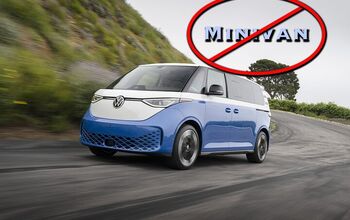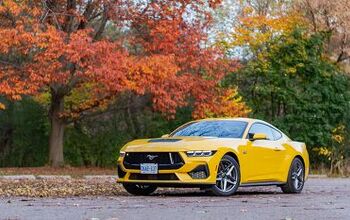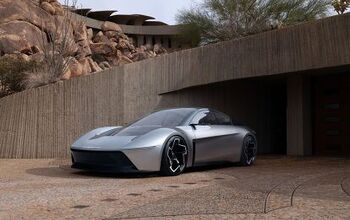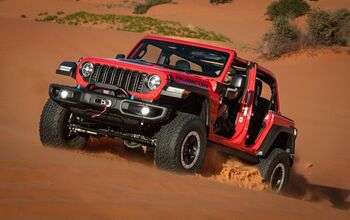2009 Nissan Maxima Review
The 2009 Nissan Maxima returns to its sporty roots following a complete overhaul and redesign for this year. Upon first glance, the curvaceous midsize sedan appears quite large, but it’s actually a tad shorter in both length and wheelbase than the previous sixth-gen model. The aggressive exterior is the product of Nissans new “liquid motion” design language and the basis for the return of the Maxima 4DSC (four-door sports car).
Setting the sporty upscale tone is a wide mouth front grille, large wraparound headlights, lower fogs and a powerful-looking hood that looks strangely G35 coupe-ish. A strong character line running from stem to stern carves out deeply sculpted rear fenders that give the new Maxima an hourglass shape usually only found on two-door performance coupes.
Distinctive c-pillars, a tall trunk lid, LED taillights and bumper-integrated twin exhaust outlets complete the aggressive design. And, although it does bear a close resemblance to other vehicles in this fiercely competitive segment, this is without question the most charismatic and best-looking Maxima ever built. It can’t be mistaken for an Altima anymore either.
No flagship vehicle is complete without a flagship engine. Nissan’s proven VQ35-series 3.5-litre V6 engine was the obvious choice. Here, it puts out 290 hp and 261 lb.-ft. of torque (35 hp and nine lb.-ft. more than the ’08 Maxima) when mated to the Xtronic continuously variable transmission (CVT) with auto, manual and sport modes. No manual gearbox is offered. However, paddle shifters are added automatically to SV models when either the sport, technology and/or premium options packs are selected.
The 3.5 S goes for $29,290 while the SV models start at $31,990 and rise to $35,440 for those wanting the available premium upgrades such as the dual panel moonroof and rear-window power sunshade, for example.
Built-on the same front-wheel drive (D) platform as the current Altima and Murano lineups, the new Maxima had to meet 4DSC expectations. Inherently lighter and roomier than RWD platforms, engineers paid special attention to body rigidity, suspension and steering to be competitive with the most well-established European sports sedans.
Performance-wise, fine tuning took place on the Nürburgring. To this end, body stiffness is up 15 percent and, thanks to a new front strut tower brace and six-point engine mounts, front suspension rigidity has increased a hundredfold versus the outgoing model. Independent subframe-mounted strut/coil springs in the front and independent multi-link double wishbone rear suspension does well to keep the body taut and flat through corners. Front and rear stabilizer bars are standard.
Four-wheel ABS disc brakes with electronic brake force distribution and brake assist are standard. The rear discs are larger and vented for this year. The substantial bracing and reinforcing of the body, interior and engine bay have eliminated any trace of unwanted torque steer, which is common in many high-power FWD applications. As a result, the new Maxima has surprisingly neutral handling with very little (if any) body roll under normal conditions.
A new vehicle-speed-sensing 15.2:1 power rack-and-pinion steering system provides excellent feedback when driving either slow or fast. It becomes quite sensitive under wide open throttle starts from zero-to-61 mph, which happens in roughly six-and-a-half seconds by the way, when the CVTs drive sport (DS) mode is active.
I drove the new Maxima earlier this year in North Carolina where it handled like an ace on the roads near Raleigh. Engineers have done well to tune out most of the understeer and the steering itself is quite tactile. It has a good on-center feel and is stable in corners.
Whether up-shifting while accelerating, or automatic engine braking (down-shifting) when coming into a corner, DS mode is able to match vehicle speed and engine rpm with the drivers intended acceleration input. It simulates a performance six-speed manual eerily well, and; when combined with special sound tuning efforts, many would be hard-pressed to tell the difference between the two.
The 3.5 SVs long list of standard features includes stand-outs like: traction control, VDC, heated leather seats, power tilt/sliding sun roof with shade, side mirrors with integrated turn signals, eight-way power adjustable drivers seat with power lumbar support and thigh extender, 60/40 split-folding rear seats, body-coloured accents, nine-speaker AM/FM/6CD/MP3/WMA Bose audio system and a whole lot more. Eighteen inch aluminum-alloy wheels and V-rated P245/45R18 all-season tires are also standard on the 3.5 SV.
SEE ALSO: Nissan Maxima Reviews
Upgrading to the sport package brings a trunk-lid spoiler, stiffer sport-tuned suspension, 19-inch alloys and P245/40R19 all-seasons to the block party. In addition to metal link interior trim, the rear seats changeover to a less practical pass-though configuration (instead of 60/40 split) that does allow for additional rear chassis strengthening to the tune of 17 percent better.
Premium is the other options path buyers can take. Unique to this package are a climate-controlled (hot and cool) drivers seat, electric rear window shade, wood interior trim, seven-inch colour monitor with rear view camera, iPod interface and that dual panel moon roof, which provides a more open and airy feel for rear seat passengers.
Both the sport and premium packs can be further enhanced with technology and navigation upgrades, respectively, that add on to the first upgrade level (making them more similar in the process). No matter which route is taken though, the new Maxima can do pretty much everything a new Apple iPhone can. Some of these noteworthy extras include a Nissan hard drive navigation system with voice recognition, 9.3GB music hard drive, rear view camera, RCA jack and XM Navtraffic compatibility.
Four-door sports cars this well-equipped are hard to find these days, but the new Maxima delivers. All in all, there’s little if anything to complain about. Although, an all-wheel drive model would not be unwelcome.
More by Shaun Keenan



































Comments
Join the conversation